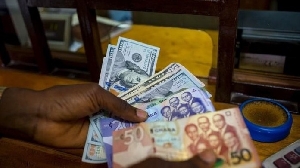Goldfields Ghana Limited has recorded a second quarterly loss of $129million compared to a net profit of $27 million in the previous quarter and $105 million in the same quarter last year.
This is due to destruction charges in Ghana of $143 million at its Tarkwa mine and $127 million at Damang.
The charges are related to the company’s decision to curtail processing activities at the operations because of lowering gold prices.
Chief Executive Nick Holland said in a statement that the situation made for a net attributable loss of 18 U.S. cents per share, compared to net earnings of 4 cents per share in the previous quarter.
Mr Holland said the average gold price in the June 2013 quarter was 13 percent lower at $1,405 an ounce and the spot price had lost around 30 percent since its record high of just over $1,920 scaled in September of 2011.
He said rival AngloGold also had troublesome assets in Ghana but Gold Fields remained committed to the West African country which is the continent’s second largest bullion producer.
Mr Holland said Tarkwa’s total cash costs were relatively low at just over $800 an ounce, adding that “Tarkwa is still a great operation and we are not concerned about Tarkwa.”
He said Damang’s road to solid profitability would be a longer one, adding that the company was expanding abroad with a $300 million deal to buy three Australian mines from top producer Barrick Gold.
He disclosed that the Barrick acquisition, which would be 50 percent payable in shares, would add 452,000 ounces to its annual production and make it Australia’s third largest gold producer, adding that the company expects to produce between 1.83 and 1.9 million ounces this year.
Mr Holland noted that following the acquisition, Australia would be Gold Fields’ largest regional production centre, accounting for 42 percent of group production, with Ghana decreasing to 34 percent and Peru and South Africa remaining largely unchanged at 13 percent and 11 percent respectively.
“The acquired assets are located in a preferred jurisdiction that we know well and where we have significant operational and management experience and infrastructure to maximise the value of the acquired assets,” he said.
“This acquisition further repositions Gold Fields as an international gold producer with a well-balanced global footprint, which should enhance our risk profile and global credit rating.
“I think we have done a lot of capital stripping to uncover what we believe is still a world-class ore body and the challenge now is for us to bring that to account in a profitable mine. It’s got good grades,” Holland said.
Gold Fields earlier this year separated off the bulk of its assets in South Africa, where labour and political risks are seen as relatively high since the sharp fall in world gold prices, a point underlined this week by a new strike threat from the country’s largest miners’ union.
Gold Fields’ shares were down 9 percent at 59.83 rand by 0900 GMT, with the strike threat in South Africa hitting the shares of other producers in the country such as AngloGold Ashanti, which fell almost 5 percent.
Business News of Tuesday, 27 August 2013
Source: dailyguideghana.com












